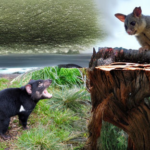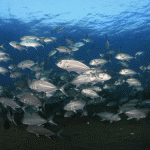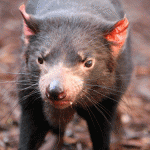
Our coral reefs may be on the brink of collapse, just like they did 4,000 years ago. Image: Shutterstock
Ancient reef foretells the possible fate of modern coral reef ecosystems.
Although coral reefs cover only a tiny fraction of the ocean floor, they are among the oldest organisms on Earth — some Hawaiian deep-sea corals, for example, have more than 4,000 years. Although global warming is a constant threat to these delicate ecosystems, there is hope: by studying ancient reefs, scientists suggest that modern coral ecosystems might have some resilience in the face of climate change.
A 6,000 year-old record of coral reefs from coastal Panama reveals that the reef ecosystem in the tropical eastern Pacific collapsed for about 2,600 years. The collapse began about 4,000 years ago, and was most likely driven by increases in the strength and frequency of the El Niño-Southern Oscillation (ENSO), the climatic fluctuation that controls climate throughout the Pacific and in much of the rest of the world. These wide swings in the climate ultimately declined and some 1,500 years ago the reefs in the eastern Pacific were growing rapidly again.
El Niño is one phase of ENSO, bringing high temperatures and intense light from calm seas, which disrupts the symbiotic relationship between the coral and the single-celled algae called zooxanthellae. Researchers took samples from the dead frameworks of reefs off the Pacific coast of Panama, forcing five-metre aluminum pipes into the reefs and extracting historical records dating back over 6,000 years.
“By analysing the corals in these cores and ageing them using techniques including radiocarbon dating, we discovered that the reefs grew rapidly at the beginning but they stopped growing abruptly around 4,000 years ago,” says professor Richard Aronson of Florida Institute of Technology.
The researchers also looked into the published literature and discovered the same interruption in reef growth at several sites in Australia, including some on the Great Barrier Reef.
If current climate warming creates a stronger and more frequent ENSO pattern, the researchers say, the modern Pacific reef systems might experience a similar devastation — and humans are to blame.
“Humans have altered reef ecosystems on a local level by chopping down tropical forests, which increases runoff from the land, poisoning reefs with sediment and nutrients. Other local impacts include fishing, ship-groundings, various forms of pollution, and mining coral framework for building materials,” Aronson claims. “On a global scale, climate change, which is the result of human emissions of greenhouse gases, is having devastating effects on coral reefs.”
The researcher’s next efforts will focus on how the reefs started up again after 2,500 years. According to Aronson, they will “use a combination of palaeontology and genetic analysis to see if the corals recolonised from local populations in refuge areas, or if instead they came from further away, like the central Pacific.”
In the meantime, Aronson claims that by reducing greenhouse gas emissions on a local and on a global level simultaneously will help assist our coral reefs in their fight for survival.






